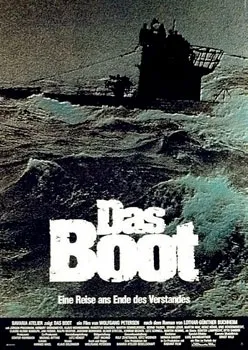Historical accuracy of Das Boot

Historical accuracy of Das Boot

Characters
Kapitänleutnant Henrich Lehmann-Willenbrock ("Der Alte" / The Old Man)
Based directly on the real commander of U-96 during Lothar-Günther Buchheim's patrol. The portrayal aligns well with accounts of Lehmann-Willenbrock's professionalism and demeanor.
Leutnant Werner (War Correspondent)
Represents the author Lothar-Günther Buchheim, who served as a war correspondent aboard U-96. His experiences and perspective shift are central to the source material.
Leitender Ingenieur (LI) Fritz Grade
Based on the real Chief Engineer of U-96 during Buchheim's patrol, Hans Peter Rothe. The character accurately reflects the immense pressure and responsibility of the LI role.
1. Wachoffizier (Number One)
Represents a type of officer found in the Kriegsmarine, though likely a composite character rather than based on a specific individual from the U-96 patrol.
2. Wachoffizier (Second Watch Officer)
Represents the younger, less experienced officers on U-boats, likely a composite or fictional character embodying common traits.
Obersteuermann Kriechbaum
Represents the experienced non-commissioned officers vital to U-boat operations; likely a composite or fictional character, not based on a specific known individual.
More characters
Johann ("Das Gespenst" / The Ghost)
While representing the extreme psychological stress faced by crewmen, Johann is a fictional character created for dramatic effect.
Ullmann
A fictional character representing younger crew members and highlighting personal connections contrasting with the brutality of war.
Hinrich (Radioman)
Represents the essential role of the radioman, but is likely a composite or fictional character.
Pilgrim (Attack Periscope Operator)
Represents a crew member in a specific role, likely fictional or composite, whose injury highlights the dangers faced.
Frenssen
A fictional character embodying the cynicism and gallows humor common among veteran sailors.
Story
U-96 Atlantic patrol in late 1941
The film is based on U-96's seventh patrol (codenamed "Feindfahrt") in late 1941, during which Lothar-Günther Buchheim was aboard.
Depiction of convoy attack tactics
The scenes accurately portray the tension, procedures, and dangers of U-boat attacks on Allied convoys during this period of the Battle of the Atlantic.
Encountering a severe storm in the Atlantic
The harrowing storm sequence realistically depicts the extreme weather conditions U-boats faced and the physical toll on the crew.
Receiving coded orders via Enigma
U-boats relied on encrypted messages for orders, and the Enigma machine was central to German naval communications (though its eventual cracking was pivotal).
Clandestine resupply from German ship in Vigo, Spain
While specific details might be fictionalized, neutral ports like Vigo were known locations for clandestine support activities for German U-boats.
Orders to proceed to La Spezia via Gibraltar
U-96 was indeed ordered to transit the heavily defended Strait of Gibraltar to enter the Mediterranean Sea in late November 1941.
Heavy attack by British aircraft near Gibraltar
U-96 was attacked by a British Fairey Swordfish aircraft on November 30, 1941, while attempting the passage and sustained significant damage.
U-boat sinks and rests on seabed near Gibraltar
The boat was heavily damaged and submerged, making emergency repairs on the seabed. However, the extreme depth shown (280m) is likely exaggerated for drama; the actual depth was less.
Surviving damage and limping back to base
U-96 did manage to surface and return after the Gibraltar attack, but it returned to St. Nazaire, not La Rochelle as depicted in the film.
U-boat and crew destroyed in air raid upon return
This ending is entirely fictional, created for dramatic impact. The real U-96 survived the Gibraltar incident, returned safely, and continued service; Lehmann-Willenbrock survived the war.
Depiction of boredom and tension between action
The film effectively portrays the long periods of inactivity, cramped conditions, and psychological strain that were hallmarks of U-boat service.
Crew's growing disillusionment and cynicism
The film accurately shows the erosion of morale and the emergence of anti-establishment sentiment as the crew endures hardship and questions the war effort.
Lack of major Allied ASW breakthroughs depicted
In late 1941, while dangerous, Allied anti-submarine warfare hadn't reached the overwhelming effectiveness it would achieve later in the war (e.g., post-mid-1943).
Setting
Interior depiction of the Type VII C U-boat
Highly acclaimed for accuracy, the cramped, complex, and claustrophobic set was meticulously recreated based on historical plans and museum examples, faithfully showing the sub's interior.
Conditions aboard (cramped, dirty, damp)
The film realistically portrays the lack of hygiene, constant dampness, poor air quality, pervasive smells, and extreme lack of personal space inherent to U-boat life.
Crew uniforms and attire
The uniforms, including the iconic leather gear and variations in dress reflecting long patrols, accurately represent Kriegsmarine U-boat crew attire.
Depiction of La Rochelle U-boat base
La Rochelle was a major U-boat base with protective pens, but U-96 was primarily based at St. Nazaire. The film uses La Rochelle effectively to represent such a facility.
Technical operation of the U-boat
Procedures for diving, surfacing, torpedo attacks, and damage control are depicted with a high degree of technical realism, reflecting actual U-boat operations.
Atmosphere of late 1941 Atlantic war
The film captures the specific period well – U-boats were still effective but facing increasing danger, particularly from aircraft, reflecting the shifting tide of the battle.
Sounds within the U-boat
The sound design, emphasizing creaking metal under pressure, sonar pings, engine noise, and depth charge explosions, significantly contributes to the realism and tension.
